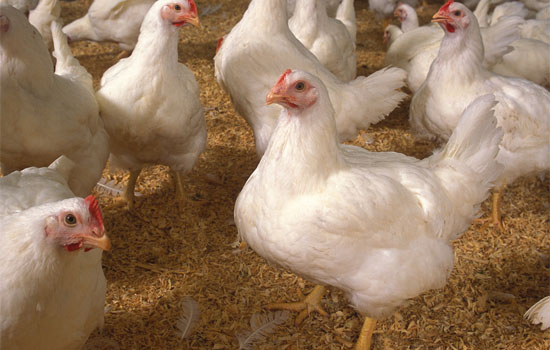In recent years, with the development of automation equipment, more and more people use automated poultry farming equipment to raise chickens. However, spring is the season of disease, so how should we prevent the disease from happening?
1. Strict disinfection
Prepare the brooding room before picking up the chicks. Feeding tanks, drinking fountains and other utensils should be washed and disinfected with hot alkaline water or 0.2% potassium permanganate water, then rinsed with water and dried. The brooding room should be thoroughly cleaned before entering the brooding room. The brooding room doors and windows should be placed in the brooding room, and the brooding equipment should be placed in the brooding equipment. 14 ml of formalin and 7 g of potassium permanganate plus 7 ml of water should be fumigated and disinfected per cubic meter of space. After 24 to 36 hours, open the doors and windows to exchange fresh air, and preheat the room temperature to above 30 °C.
2. Insulation and humidity control
Chicks have few fluff, poor heat preservation, cold resistance, and too high and low humidity affect growth and development. Suitable temperatures for chicks are: 32 to 35 ° C for newborn chicks, 30 to 32 ° C for 1 week of age, 28 to 30 ° C for 2 weeks of age, 25 to 28 ° C for 3 weeks of age, and 22 to 25 ° C for 4 weeks of age. It will be lowered by about 15 °C every week. The temperature should be balanced, not high or low, and the thermometer should be hung 10 cm above the active position of the chick. The temperature is suitable, the chicks are evenly dispersed; the temperature is too low, and the chicks are crowded into piles. The humidity should be maintained at 60 to 65% within 1 week of age and 50 to 60% after 1 week. The chicken house is too wet. You can put some quicklime in the cloth bag to absorb moisture in the room. If it is too dry, put the basin water on the stove and increase the humidity in the room by evaporation of water.
3. Suitable density
The excessive density of chickens in the house is not conducive to the growth and development of the chicks. The density is too small to occupy a large area, and it is also not conducive to heat preservation.
In production practice, it is appropriate to raise 40 to 50 chicks per square meter, or 20 to 30 chicks per square meter, or 15 to 20 large chicks per square meter.
4. Strengthen ventilation
Keeping chicks should pay attention to solving the contradiction between heat preservation and ventilation, and strengthen the ventilation of the brooding room, which is conducive to maintaining indoor air convection in the brooding room, fresh and clean, no odor.
When the sun is sunny at noon, you can open the window for ventilation, especially for chicks over 10 days old. Avoid cold wind blowing directly on the chicks, usually pay attention to prevent thieves from invading.
